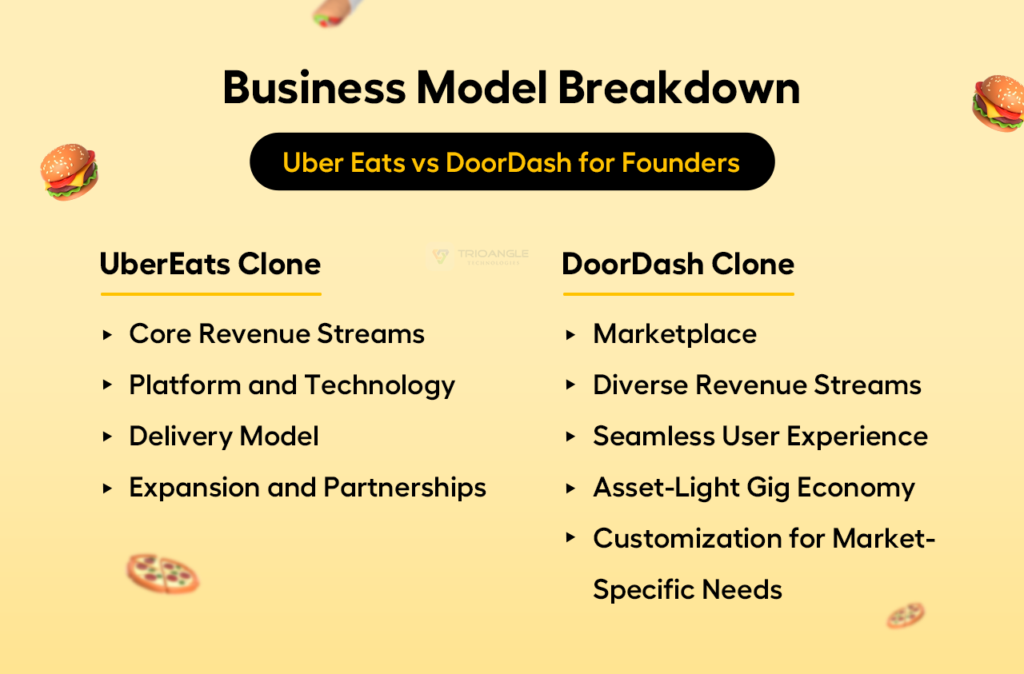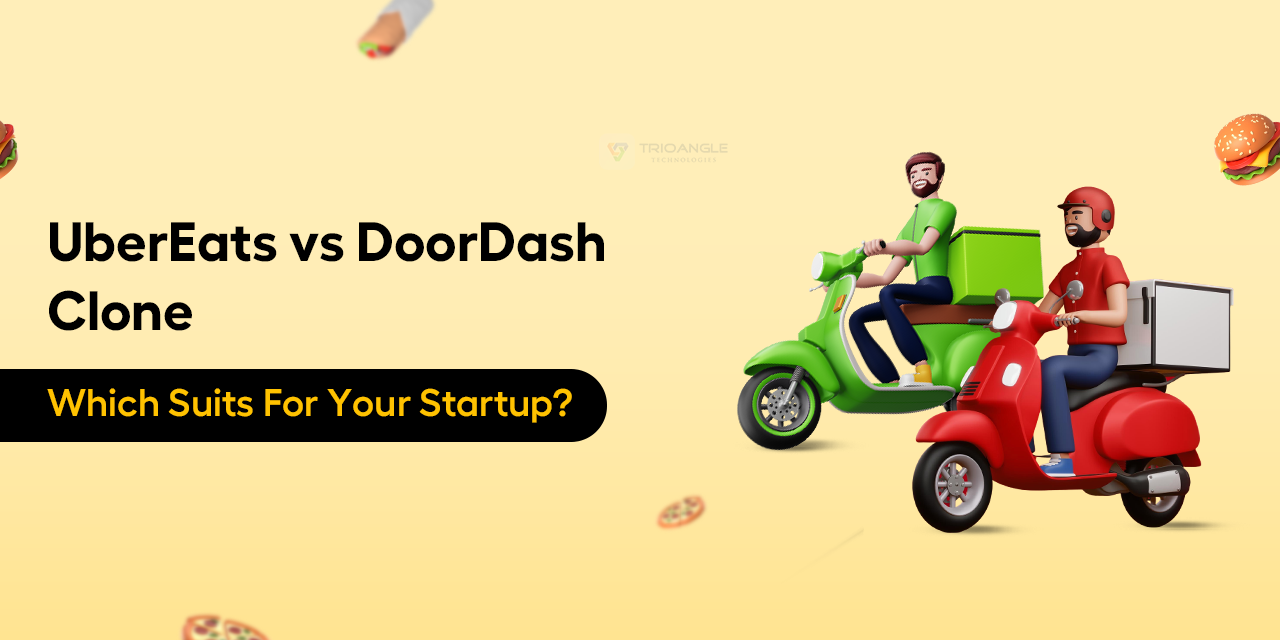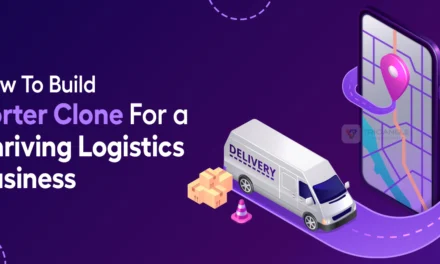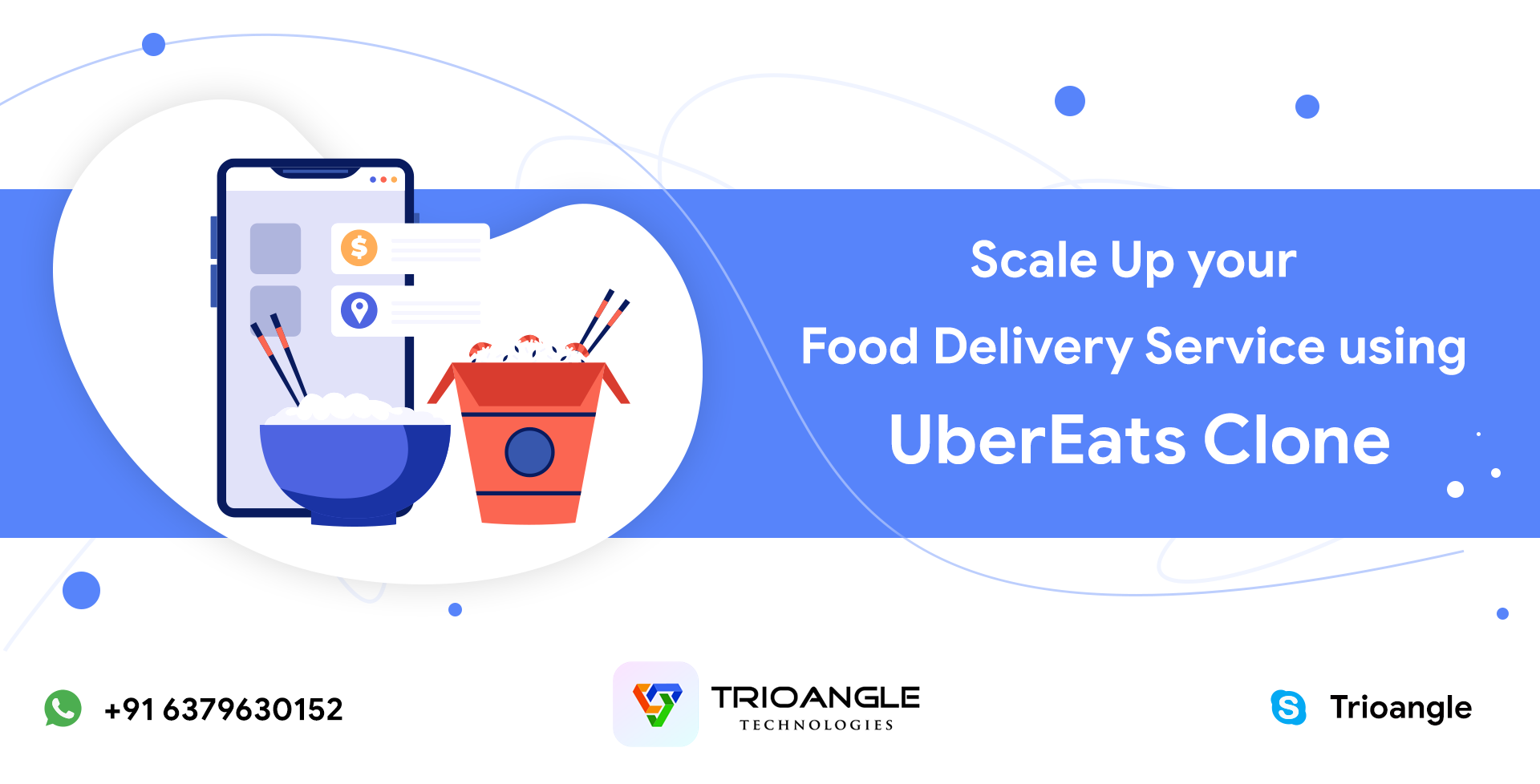The Online food delivery clone app solutions have become essential for startups looking to enter the rapidly growing food delivery market. DoorDash and UberEats have become popular options for business owners seeking to grow rapidly and strategically. Although they both have strong features and tested models, their approaches to business are distinct.
Are you planning to launch a food delivery startup? UberEats Clone and DoorDash Clone are top choices, but which fits your startup best? From features to flexibility, each clone caters to different business goals.
This blog outlines the key distinctions in this guide to help you select the best food delivery clone that best suits your business objectives.
Let’s find out which clone aligns with your vision.
Business Model Breakdown: Uber Eats vs DoorDash for Founders
The business model is the major part that you should know about, as it gives you a clear roadmap for efficient operations, develops strong decision-making skills, and helps to achieve long-term success.
Let’s figure out which clone is best for your business model.

UberEats Clone
Uber Eats clone is a well-known online food delivery service that utilises an intuitive app and website to link consumers with a huge network of eateries and delivery partners. Customers, restaurants, and delivery drivers are the three primary stakeholders that benefit from its multifaceted marketplace business model. Let’s unlock it,
Core Revenue Streams
- Uber Eats clone charges its partner restaurants, usually ranging from 15% to 30% of the total cost of each order. Commission fees, including marketing, customer service, and order processing.
- Depending on the distance, demand, and order quantity, the user pays a delivery cost. Uber Eats receives this fee, which goes towards paying delivery drivers.
- It adds service fees to orders, which help cover operational costs.
- Uber Eats supports a subscription option that offers perks like free delivery and discounts in exchange for a monthly cost. This encourages customer loyalty and repeat business.
Platform and Technology
- Uber Eats makes use of Uber’s established logistics network to provide easy communication between customers, delivery partners, and restaurants.
- By promptly and effectively connecting delivery vehicles with adjacent orders, its sophisticated algorithms optimise order dispatch.
- Dashers cut delivery times by using route optimisation technologies to find the quickest and most economical routes.
- It allows users to track their orders by using real-time tracking tools, which increases confidence and transparency.
- Without sacrificing dependability, the platform’s scalable infrastructure handles large order quantities. This technological foundation is essential to provide a seamless, user-friendly experience.
Delivery Model
- Uber Eats has an asset-light delivery approach and depends on a large network of independent contractors, such as cyclists and drivers.
- This gig economy strategy gives delivery partners and the platform flexibility. UberEats swiftly expands its business across numerous cities and nations because it does not own any delivery cars.
- To maximise their earning potential and optimise resource use, drivers in some areas multitask by delivering both food and ride-share customers.
- It adapts effectively to changing demand because of its adaptable workforce.
- The strategy maintains rapid delivery times and broad coverage while cutting overhead expenses. This approach promotes operational agility and quick expansion.
Expansion and Partnerships
- It continuously expands its customer base by partnering with a variety of food suppliers, including national chains, grocery stores, and neighbourhood eateries.
- The platform’s products are diversified by these partnerships, meeting the many demands and preferences of its users.
- Uber Eats builds a vibrant marketplace by integrating well-known brands with small companies. Regularly attracting new users and increasing visibility are made possible by strategic marketing campaigns and promotions.
- To improve the user experience, the platform also collaborates with tech firms and payment providers. Its market footprint is further expanded by entering the supermarket and convenience delivery markets.
DoorDash Clone
DoorDash clone is one of the on-demand meal delivery apps that works with eateries to provide its customers. A restaurant can draw in new business and provide its current patrons a new option to enjoy their favourite dishes when it joins DoorDash.
Marketplace
- Three key players are connected by a dynamic marketplace at the core of the DoorDash clone model: delivery partners wanting flexible income opportunities, restaurants seeking a bigger audience, and customers yearning for convenience.
- The three of them create a smooth ecology driven by technology and instantaneous communication.
- Delivery partners are paid per delivery and have access to flexible employment opportunities. This makes it easier for all three parties to coordinate and communicate.
- They work together to create a self-sufficient ecosystem that drives the food delivery cycle from order to door.
Diverse Revenue Streams
- A DoorDash clone platform generates income from a variety of balanced revenue streams, which makes the company model viable and scalable.
- The commission fees that restaurants are paid for each order are the main source of revenue. Delivery fees are paid by customers and vary depending on demand and distance.
- Additional service fees assist in paying for platform upkeep and operating expenses. Loyal users can receive perks through a subscription model in exchange for a monthly charge.
- In-app advertising or promoted listings are other options for restaurants looking to boost their visibility. These varied streams provide consistent development and profitability by reducing reliance on any one source.
Seamless User Experience
- The sophisticated technology behind a DoorDash clone improves the user experience at every stage.
- For speedier delivery, smart algorithms match drivers with clients and restaurants to manage real-time order dispatch.
- Route optimisation boosts driver productivity and cuts down on delivery times. Customers benefit from smart notifications, safe payment channels, and real-time order tracking.
- By providing tailored suggestions based on past orders, the platform increases user engagement. Customers, restaurants, and drivers all enjoy a hassle-free experience because of a seamless, user-friendly interface.
- In addition to increasing operational effectiveness, this technologically advanced solution fosters enduring user happiness and loyalty.
Asset-Light Gig Economy
- A DoorDash clone takes a low-asset strategy, depending on third-party delivery services instead of having a fleet of cars.
- The gig economy paradigm enables rapid platform scaling without requiring significant infrastructure investment.
- Flexibility and minimal operating costs are provided by drivers or riders using their vehicles, such as cars, bikes, or scooters.
- By giving delivery partners the freedom to work at their own pace, it increases coverage and involvement.
- The dynamic supply feature of the model allows it to swiftly adapt to spikes in demand, such as around lunch or on weekends.
- It makes it possible for companies to enter and grow their markets quickly. At the end of the day, this strategy minimises expenses while increasing reach.
Customization for Market-Specific Needs
- A DoorDash clone provides a great deal of flexibility, enabling companies to customise the platform to meet the demands of their local markets.
- To accommodate local tastes, entrepreneurs can alter payment channels, currencies, languages, and branding.
- Additionally, depending on demand, the platform can offer hyperlocal delivery categories such as groceries, alcohol, or medications. To improve user engagement, UI/UX elements are adjusted to cultural conventions.
- It is simple to set up elements related to regulatory compliance, like delivery zone limitations or tax settings.
- The platform gains relevance and credibility in each target market through this local-first strategy. It increases acceptance and loyalty by ensuring the clone feels natural rather than generic.
Mapping Food Delivery App Market Shares Across Countries
Regional differences in market domination notwithstanding, the global food delivery sector is growing quickly. Despite operating globally, apps such as Uber Eats and DoorDash see significant fluctuations in their market shares based on regional rivalry, customer trends, and strategic alliances.
This blog investigates the performance of the main meal delivery services in various nations as well as the factors that contribute to their local success.
UberEats
Despite being a global leader in the meal delivery industry, Uber Eats’ market share varies greatly between nations due to local competitors, laws, and consumer preferences. A summary of its prevalence in important areas is provided below:
| Country | UberEats Market Share |
| United States | 23% |
| Canada | 30–35% |
| United Kingdom | 27% |
| France | 67% |
| Germany | 9% |
UberEats exhibits a strong global presence, leading in France and maintaining strong positions in Australia, Japan, and Canada.
DoorDash Clone
With services like DoorDash changing how people get meals, the global food delivery sector has grown rapidly over the last ten years. In 2025, as the demand for convenience-driven services keeps rising, DoorDash and its regional clones have become major players in a number of nations, each of which has adjusted to local customer preferences, logistical difficulties, and market conditions.
| Country | DoorDash Market Share |
| United States | 60–67% |
| Canada | 49% |
| United Kingdom | 38% |
| France | 20–25% |
With its dominant position in the United States and Canada, DoorDash continues to be a major force in North America. However, it competes globally through regional leaders.
Sparking Key Features of UberEats vs DoorDash Clone
Let’s have a look at UberEats and DoorDash are described in depth below, along with how they compare in 2025 in several areas:

Restaurant & Grocery Partnerships
- UberEats collaborates with more than 900,000 eateries worldwide, in addition to big-box stores like Walmart, Costco, and Carrefour.
- It is a flexible platform for ordering groceries, meals, and even prescription drugs in areas that are supported because of its extensive selection.
- DoorDash has connections with over 590,000 retailers, mostly in the United States and Canada.
- In addition to restaurant delivery, it provides groceries and necessities via DashMart, a network of underground retailers that provide well-liked products for prompt delivery.
Subscription Plans
- Uber Eats provides benefits such as free delivery, 5–10% discounts, and perks across both Uber Eats. It’s a good value for users who frequently use both services.
- DoorDash offers access to exclusive discounts, lower service fees, and free delivery on orders over $12. For regular meal delivery customers, it’s perfect, particularly in the US, where DoorDash has a wide reach.
Real-Time Tracking
- UberEats offers real-time tracking, delivery estimates, and carefully selected collections through a simple, map-based user interface. It ensures timely delivery and builds user trust.
- DoorDash has a merchant-focused UI, emphasizing promotions, filters, and personalized restaurant recommendations. It is known for its efficient ordering flow and targeted local deals.
Driver & Delivery Network
- Uber Eats allows a variety of delivery methods, such as bicycles, scooters, vehicles, and even strolling messengers in crowded areas.
- For drivers to be more productive and make more money, the platform also incorporates features like stacked deliveries and real-time tracking.
- DoorDash clone uses this feature, driver &delivery network for independent contractors known as Dashers to deliver goods.
- In order to guarantee quicker and more effective deliveries, especially in suburban regions, the company places a strong emphasis on local logistics and route optimisation.
Above all, Uber Eats and DoorDash have similar features with unique advantages. As compared to UberEats, Doordash’s delivery network stands out for its global scalability, flexible workforce, and smart dispatch system.
Got The Finite Solution!
The on-demand meal delivery app like UberEats and Doordash clone offers robust frameworks for launching a food delivery startup. As per the overall comparative analysis, the DoorDash clone model is often the better fit for new ventures, especially in emerging or suburban markets.
Its focus on hyperlocal logistics, faster delivery times, and cost-efficient operations makes it more scalable at an early stage, slightly higher than Uber Eats. Choose the DoorDash-style platform that allows startups to build a strong regional presence, onboard local merchants quickly, and optimize deliveries with fewer resources.
For startups aiming for faster market entry, operational simplicity, and a proven North American success model, the DoorDash clone is a strategically smarter choice.
Start your Food delivery Startup Business Right Now!







